Route 50 in Nevada, otherwise known as “The Loneliest Road in America” opens up a vast expanse of endless desert, mountains and so much in between that will find you utterly enchanted by what you see. Think ghost towns, historical communities, state parks, alpine National Parks, traditional sagebrush saloons and unrivalled views at every turn. Through Nevada, Route 50 is just over 400 miles and can be completed in around 4 days.
Why is it called “The Loneliest Road in America”? The story goes that in a 1986 issue of Life Magazine, it was dubbed as having nothing of interest to explore and warned readers not to risk it unless they were confident in surviving. The road is wide open, you must plan your fuel stops and time wisely, but it’s one of the best adventures you can take through some of the United States most iconic landscapes.
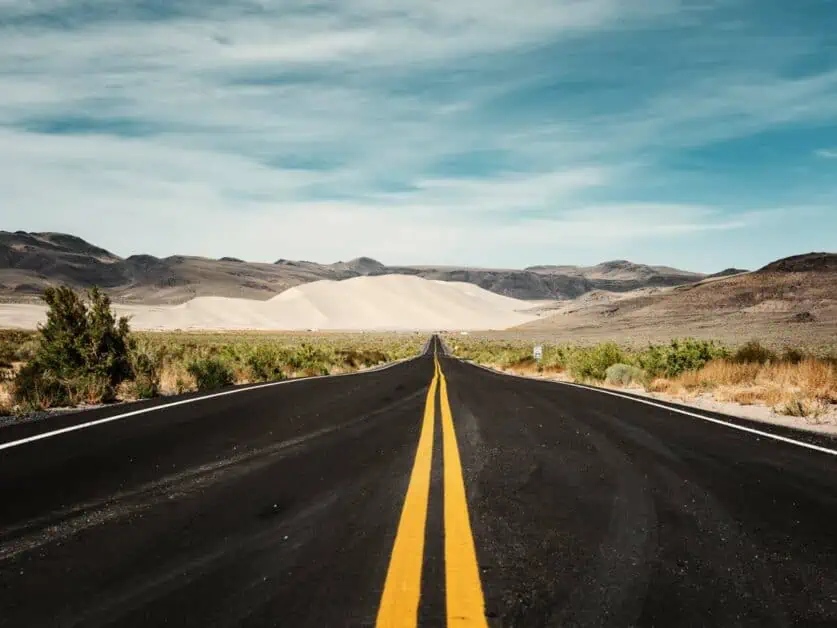
Editor’s Note: This article is in partnership with Travel Nevada, all opinions are our own.
Table of Contents
The Allure of Route 50
If you’re planning to head out on a road trip like Nevada’s Route 50, you can expect to have an incredibly unique experience, and in many ways unlike anything else you may have done already. One of the most significant things is that you’ll experience the desert changing on a grander scale. You’ll experience vast basins, areas which become much greener, alpine mountains and everything in between. Here are some of the key factors that make Route 50, Nevada so appealing to adventure seekers.
Natural Beauty & Scenery
Set in the Great Basin, the scenery is vast. However, seeing desert landscapes that reach off into the distance further than you can imagine is only the start of things on Route 50. Great Basin National Park is a treat at the end of your journey that you likely didn’t even know existed and has some of the most stunning alpine scenery we’ve ever encountered. Then you have areas like the Stillwater Refuge, near Fallon which is a hidden gem of biodiversity and well worth exploring.
You also can’t discount the fabulous petroglyph hike, near Fallon which provides a fascinating understanding of the Native American roots in the area. You’ve got so much more in-between, such as Groves Lake and Kingston Canyon as well as Spencer Hot Springs. There is so much to explore here, you’ll wish you had longer (and you can, if time allows).
Historical Significance
Following on from above, the Native American history is very clear in many places along Nevada’s Route 50. Petroglyphs present themselves in the landscape, as well as nods to traditions still very active in the area. Route 50 also follows the general route of various historical wagon roads and pony express routes – it’s been described as a ‘corridor’ and the gateway to the west.
Furthermore, Ward Charcoal Ovens, just outside of Ely are rich in history. The area has six beehive shaped charcoal structures or ovens that were used from 1876 until 1879 to process the silver discovered in the area. They were also known to be used as hideouts for stagecoach bandits when they finished being used. You’ll also get to explore a wealth of historical towns and small cities, such as Austin, Eureka, and Ely.
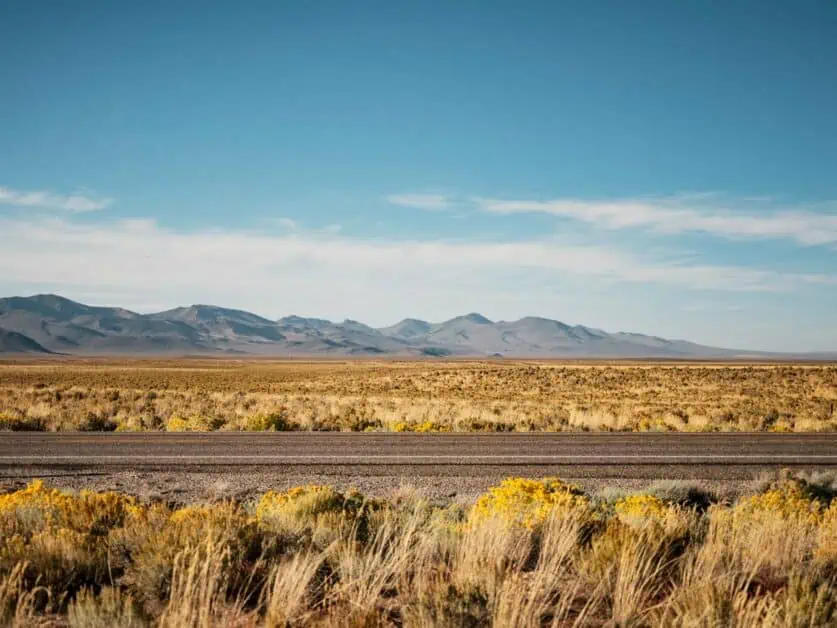
Solitude and Tranquility
If you’re into your solitude, then Nevada’s Route 50 is certainly going to be for you – it doesn’t get lonelier than this! Whilst you’ll go through small towns and communities with friendly welcomes and see other people on your way, you’ll also spend vast amounts of time out on the open road. There is something incredibly special about this, and the sense of quiet and vastness you experience. Within a day or so, you’ll realize just how infrequently you see other people! It does mean that resources such as fuel and water are valuable, and you’ll get a greater sense of appreciation for the bare necessities.
See Nevada’s Route 50 in motion
Bring Route 50 to life and watch how we experienced this iconic road trip:
4 Day Itinerary Travelling Nevada’s Route 50
Nevada’s Route 50 can easily be completed over 4 days and that gives you plenty of time to take things in at a relaxed pace and gives enough opportunity to enjoy Great Basin National Park at the end. Of course, there are plenty of other opportunities to stop along the way, and this Route 50 road trip itinerary is designed to have room for spontaneity too (one of the best things about road trips we think!). We’ve linked to each day of the trip below and outlined points of interest along the route, as well suggested places to stay and eat, hikes and other things to do. The Loneliest Road in America can be divided into the four days as follows:
- Day One: Carson City to Austin
- Day Two: Austin to Eureka
- Day Three: Eureka to Baker
- Day Four: Baker to Great Basin National Park
The map below gives you an overview of the road trip for each day to complete historical Route 50 in Nevada:
Day 1 – Carson City to Austin
The first day of the Route 50 itinerary is in many ways the most jam packed, but also one of the most fun and varied. Seeing the landscape change when you leave Carson City, where things become wilder and open all the way through to Austin (or alternatively staying just outside) is unlike anything you’ll have experienced before.
You’ll get to experience the desert proper on day one of your trip, with a whole load of cultural and natural spectacles along the way. For example, just outside Austin, you’ll get to take in Stillwater Refuge, which is incredibly varied in terms of the plant and bird life the area sustains. Sand Mountain is also truly spectacular to see. One of the real highlights of the day is a visit to Middlegate Station, an iconic sagebrush saloon with some of the warmest locals – you’ll want to stay for hours. Plus, they do some of the best burgers you’ll try (and they even have vegan and plant-based options too). Day one of Route 50 will have you soaking in that true Wild West feel.
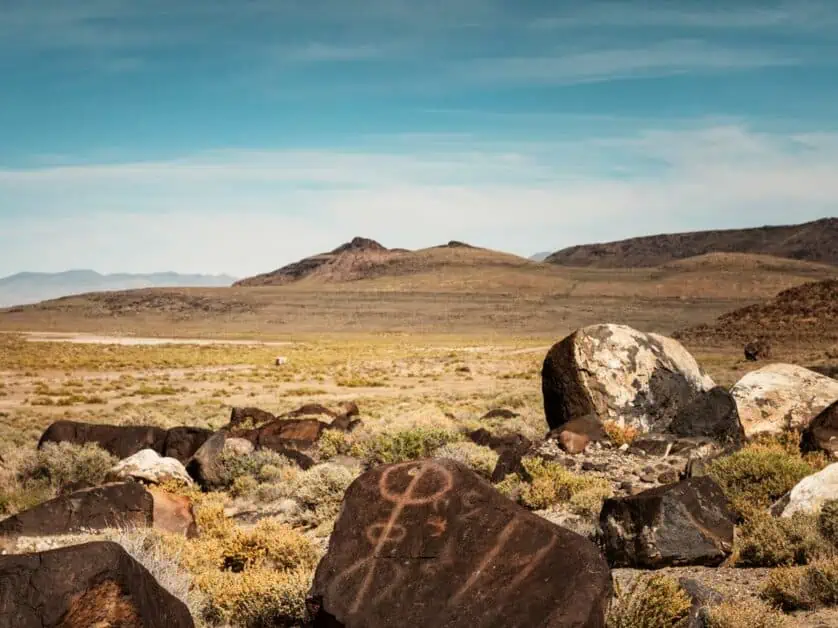
Day 2 – Austin to Eureka
The second day of driving Route 50, Nevada actually has you covering a much smaller distance than you did yesterday (or at least it feels that way) and is much less jam packed than the other days on this road trip. So, take in the experience as you go! Day 2 has you experiencing the heart of central Nevada with some of the loneliest places on the loneliest highway from Austin to Eureka.
At the heart of the geothermal activity in the area, you’ll find canyons carved out, hot springs which are reliably some of the best in the area, historic, still lived in ghost towns and further sage brush saloons in the form of the Lucky Spur Saloon. This area is frequented by locals and isn’t really on the way to anywhere, so the nature-based experiences here are sought out because people yearn for the peace and quiet provided by dark night skies and far-reaching landscapes. Soak in the views and relaxed pace today, you’ll enjoy the rest – a true backcountry gem awaits you with endless mountain peaks soaring above you.
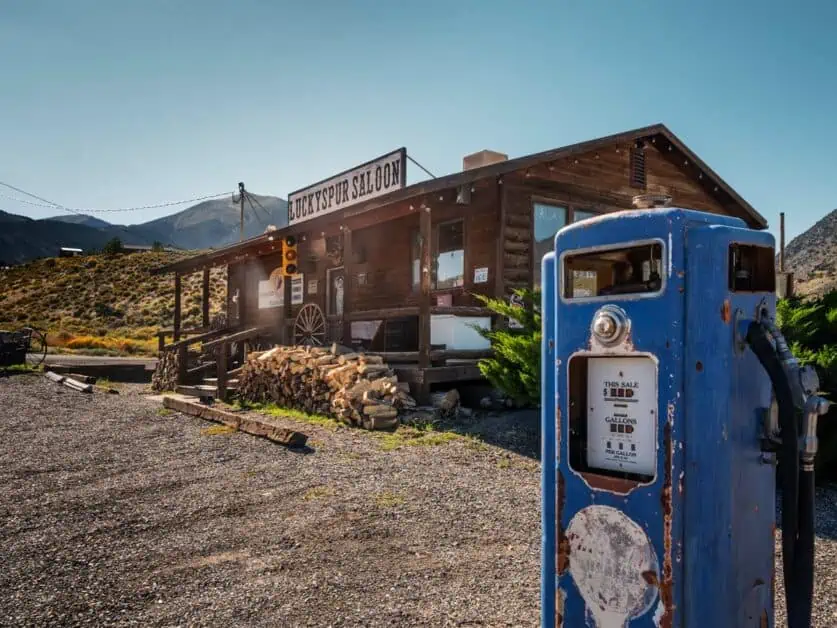
Day 3 – Eureka to Baker
The last day of full driving on the Nevada Route 50 road trip takes you from Eureka, where you’ll have stayed the previous night to Baker, just outside of Great Basin National Park where you’ll spend day 4. There is so much to see and do on this day, that if you wanted to make your trip longer, you could extend by staying in Ely to spend more time around Cave Lake State Park to check out the many adventure opportunities there. Day 3 really has it all – time outdoors and in nature, whilst also getting to check out small towns and slightly bigger cities with an incredible amount of history and pride for their place on the map.
Eureka, where you will have stayed at the end of day 2 starts the day off with discovering local treasures such as the Eureka Opera House, the Eureka Sentinel Museum and ghost tour, amongst others. Whilst Ely, a vibrant city and your next stop, presents old fashioned soda, the Nevada Northern Railway Museum, Cave Lake State Park, Garnet Hill and Ely Renaissance Village, and more. After exploring Ely and Cave Lake, you’ll discover Ward Charcoal Ovens State Park, home to six beehive like structures that have been fantastically preserved. You’ll then head to Baker, where you can rest and recuperate amongst stunning mountain views before your destination of Great Basin National Park the next day.
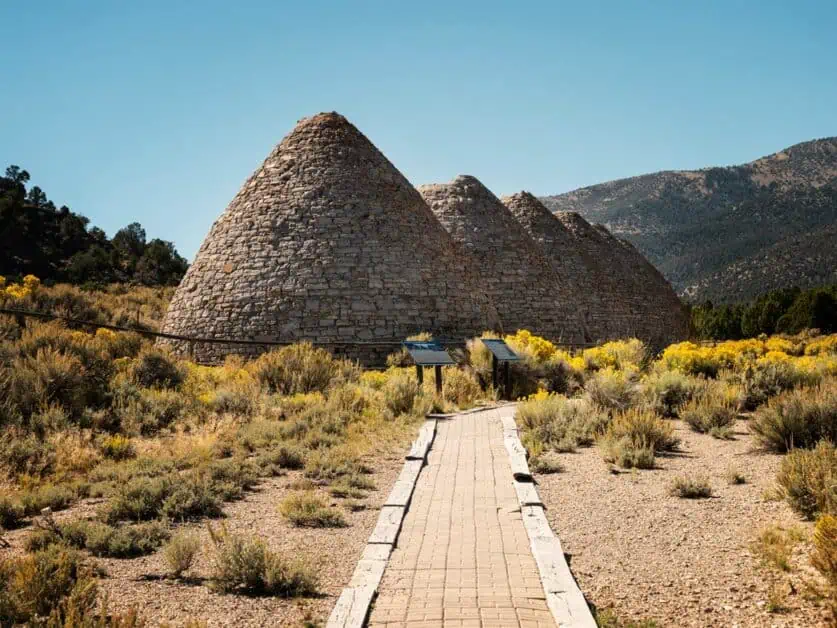
Day 4 – Exploring Great Basin National Park
Once you’ve completed Nevada’s Route 50 up to Baker, exploring great Basin National Park is a real treat, and not something you’re going to expect. Great Basin National Park is a really special place and could very well be a National Park that you’ve never heard of that’s just waiting to be explored. What makes Great Basin National Park so special is its unique position as an alpine oasis amidst Nevada’s arid landscape, and this will be really, strikingly obvious to you after the last few days exploring through the desert.
Great Basin National Park, which is situated halfway between the Sierra Nevada and the Wasatch Mountain ranges really does show what Nevada has to offer and presents some of the state’s tallest mountains and peaks. Due to its unique offering, it has a wealth of ecosystems and diversity. For a start, alpine lakes, streams, and ancient bristlecone pines will keep you captivated, but it is also home to the state’s only remaining glacier and the Lehman Caves and cave system.
Adventure lovers will be excited to explore Great Basin National Park, and this would be a great opportunity to even extend your trip, spending a couple of days at the end of driving The Loneliest Road in America exploring all this area has to offer. You can technically visit at any time, but around fall or autumn is particularly stunning due to the colors contrasting against the alpine mountains and offers the best experience for hiking.
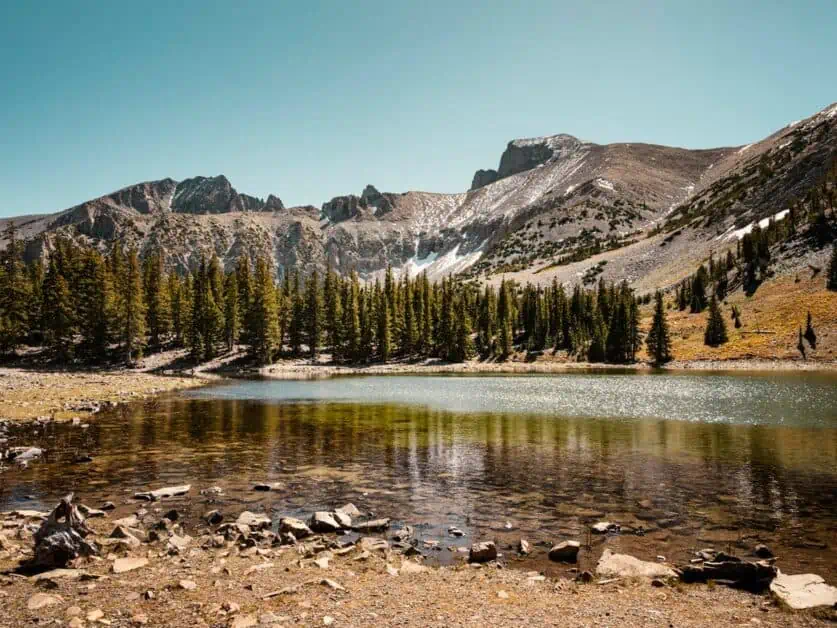
Things to Consider when Travelling Route 50 in Nevada
Of course, over time, The Loneliest Road in America otherwise known as Route 50 in Nevada has developed a persona as being for the adventurous. However, the main things you really need to consider are just common sense – book your accommodation in advance and plan your journey for each day. Make sure you take enough food, drink, clothing and sunscreen and you’ll be able to focus on the adventure. One thing to consider is that due to its remote location, if you have certain dietary requirements, you’ll want to research which places have those options. We’ve tried to be as helpful as possible in listing places that will offer vegetarian and vegan options, but they can be few on the ground in Nevada. That said, many things can be made vegan easily, and you’ll generally find restaurants are able to do this no problem.
You’ll want to make sure that your car is in good working order too, as there are not so many fuel stops along the way. When a sign says ‘no gas for 50 miles’, believe it! Always make sure your tank is as full as possible – it’s worth just topping up along the way as you go.
Gas Stops on Route 50, Nevada
As mentioned above, there aren’t a huge amount of gas stations on Route 50, so you will want to plan accordingly and based on where you’ll visit, we’ve outlined the current gas stations you’ll find below on the route:
The Best Time to Visit
You might think that given Nevada’s Route 50 is in the desert, that any time of the year would be a good time to visit, however its actually important to consider how the landscape changes throughout the year. Because the majority of The Loneliest Road in America through Nevada is in the high desert, it can get considerable snow in winter. Great Basin National Park is also much harder to visit in winter. It’s not impossible, but the Wheeler Peak Scenic Drive, which connects most of the hiking trails will be closed in winter, from November through to May.
You can also expect it to be much colder in winter, especially at nighttime – the desert is always cooler at night – but in the winter this increases. That said, Route 50 can look spectacular in winter with snow high up in the mountains and being surrounded by desert. In the summer, it can become very hot, in fact somewhat unbearable for some of the journey. It is still possible, but you’d need to plan accordingly. Of course, sitting at a higher elevation, Great Basin National Park would be very doable and open in full swing at this time.
As you can see there are pros and cons and climate considerations to take into account when visiting and taking on this road trip at any time of the year, however we believe that late summer and fall/autumn (from August to early October) gives the best opportunity to catch everything at a manageable heat, and to see Great Basin National Park at its best.
Ethical and Sustainable Exploring
Of course, much of the landscape you’ll be exploring is sacred land and has been home for thousands of years to Native Americans. Route 50’s more recent history has seen the area used heavily as a Pony Express route, and even though this is much newer, it still holds a great hand in the history of the area. With this in mind, it’s important to consider ethical and sustainable exploring for your trip. Here are some pointers on how you can take care of and respect the landscape in the best possible way on your trip, to help preserve it for years to come.
Leave No Trace
Leave No Trace refers to a simple set of ways in which we can look after the outdoors and the best practices we can all take for doing so. Within Route 50 in Nevada, you’ll come across delicate ecosystems, through to wilderness areas, and it’s important to help preserve them. Leave No Trace is set out as a series of 7 key principles that you can take on board for your visit – you can find out more about these here.
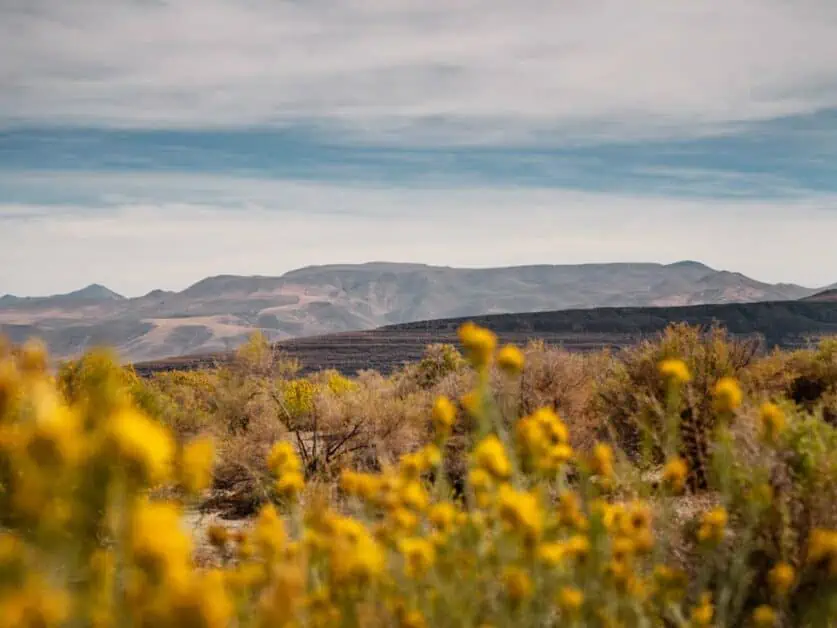
How to be a Sustainable Visitor
One thing that is really important on any trip we make is to be as sustainable as possible and respect the local areas we visit. Some key ways you can do this, and that are especially apparent on Nevada’s Route 50 is to support local businesses wherever possible. Many of the locations you’ll drive through are small and are sustained by small communities, your dollars matter when keeping these communities thriving. As above, you should also make sure you adhere by Leave No Trace principles when exploring to lessen your impact on the landscape, especially in some of the delicate ecosystems you’ll find on Route 50.
Learn About Native Culture
There is an incredibly big influence of native culture in the area, and you’ll see this evidenced in many of the places you visit, from petroglyphs to cherished areas and mythology. Take the time to learn about the areas you visit – many of the trails you’ll find will have information on native history and the visitor centers on route will have even more. It’s also important to learn about and consider the absolute devastation inflicted on native Americans, and something that cannot be shied away from, which can give a better sense of perspective and compassion. The Stewart Indian Cultural Center, in Carson City at the start of your trip, is a good location to find out more on this side of history, which is often missed.
FAQs
How long does it take to drive Nevada’s Route 50?
You can easily drive Nevada’s Route 50 in 3 days, with one day at the end to enjoy Great Basin National Park, so 4 days in total. If you want to make your trip longer, we would suggest spending more time around Carson City or Lake Tahoe at the start, and more time at Great Basin toward the end. You could very comfortably extend the road trip to a week and not run out of things to do!
How accessible is Nevada’s Route 50 ?
If you’re new to road trips, Nevada’s Route 50 could very well be a great starting point, as we found the route relatively accessible and easy enough to plan. You’ll also have cell service in pretty much all areas except for Baker and around Hidden Canyon, so making any last minute changes should be no problem. If you have specific accessibility needs, Nevada’s Route 50 could well be a good option for you too.
In most locations, there are options with wheelchair accessible rooms, and motels in the area often have drive up rooms. If this is a concern, it’s always advisable to call and check with the staff at your chosen accommodation before you book to stay. Many of the stops along to way on Route 50 can be enjoyed from the car, and some shorter trails may be suitable if you’re looking for routes that are simpler to follow with less elevation gain. Great Basin National Park may be a little trickier if your physical mobility is your main concern, as most of the activities in the park are at higher elevations and the hikes more difficult because of this.
Is Carson City worth visiting ?
Carson City, at the start of Nevada’s Route 50 may seem like any other city in Nevada, however it has a lot going for it. From museums, restaurants and a thriving scene to nature and outdoors activities a plenty in nearby Lake Tahoe for example, Carson City is a great place to spend some time.
How tough is the hike to the top of Wheeler Peak in Great Basin National Park?
The hike is considered challenging and is not classed as a beginner hike, even though it may be appealing due to the fact that it’s the second tallest mountain in Nevada, and the tallest mountain in Great Basin National Park. We’ve outlined the hike in Day 4/article 4, and you should only attempt it if you feel ready with your hiking abilities – it is at altitude, with significant distance and ascent and descent.
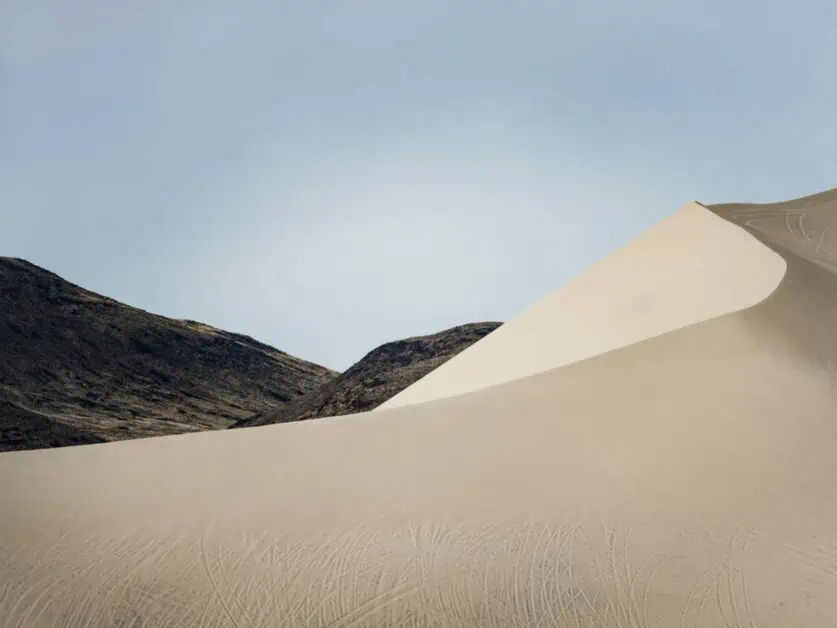
Is it best to drive eastbound or westbound on Nevada’s route 50?
You can do Route 50 in either direction, but we would recommend driving eastbound, starting in Carson City and finishing in Baker. Having Great Basin National Park to explore at the end of the trip is a really memorable experience and leaves you on a certain high, so to speak.
Is the road surface good on Nevada’s route 50?
The entire of Route 50 itself is incredibly good quality – it is all paved road. It is also, in many parts, long and straight; you can see the road straight out in front of you (which is a wonderful thing to see). You’ll only encounter dirt roads and gravel roads when you go off the main road to some of the locations we’ve outlined, and they are mostly graded and well looked after too, so long as you use caution, you should be fine in a normal road car.
Conclusion
Route 50 in Nevada, otherwise known as The Loneliest Road in America presents something different to what you’ll likely be expecting. The vastness and sheer scale of the trip and the fact that it’s doable in roughly 4 days will be enough to blow you away. Those open roads beg to be explored and it’s the perfect opportunity to experience some thinking time and solitude away from it all.
There is so much to be explored on Nevada’s Route 50, from high altitude desert landscapes to sand dunes and alpine oasis, not to mention almost ghost towns and warm, characterful sagebrush saloons. Whilst Life Magazine may have said there is nothing of interest on this route in their article in 1986, we think they got it really wrong. You certainly can survive, and it’s a welcoming adventure that will stay in your memories for a long time. With a little bit of planning, this trip is extremely doable and a sure highlight throughout Nevada.
